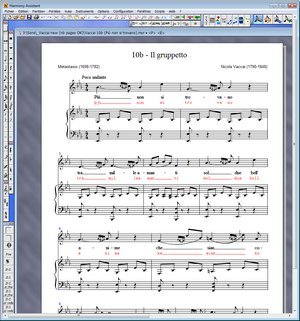
Export in miscellaneous digital file formats (WAV, AIFF, MP3, OGG.) Digital tracks (possible to import WAV, AIFF, MP3, OGG.) Embedded softsynth : does not need any hardware other than a sound card. Tablature calculation for miscellaneous string instruments Complete score editor, with unlimited number of staves The list of features in this program is so large that it cannot be enumerated here. Focused on the landscape and characteristics of the Mongolian steppes, Mongolian singing exemplifies the melancholy fastness and grandeur of the region.Melody Assistant is a powerful score editor with digital audio capabilities. Mongolian singing is famous for its guttural melodies and sweeping epics.

The fiddle has a unique sound that is the signature voice of many Mongolian melodies and the model of all musical instruments in the nation. It is the goal of every Mongolian family to own a morin khuur, though expensive.

Known to embody the sounds and motions of a horse, this square fiddle has a lengthy, level handle that is curled at its tip, which is crowned with a carving of a horse. It is become the national instrument of Mongolia. This is the legendary myth of the beginnings of the Morin khuur, the Horse Head Fiddle. He began playing, eulogizing the eminence of his departed friend. Mournfully fixing the horse’s head to the handle he laid down his head next to his horses remains to join his spirit with his dead steed’s. Heartbroken, he commenced to carve a fiddle from its remains.

Once upon time a poor man had a great horse, faster than a bird. Each can be identified through the variety of performers and the complexity of the performance. Several styles of music over the centuries have developed in China. Three Foundational Forms of Chinese Music

One of his sayings expresses that “To educate somebody, you should start with poems, emphasize ceremonies, and finish with music.”Ĭonfucius supposedly believed that of the six most important subjects to study, music was the second more vital discipline beneath the study of ritual and public ceremony-followed by archery, chariot-riding, calligraphy/writing, and computation or mathematics. The famous Chinese philosopher, who lived roughly 2,500 years ago, has been one the main sources for how Chinese traditional music has been understood, especially the concept of music as promoting harmony. It has been used as means of creating harmony among the populous and contentment throughout all echelons of its society. The myth has been used as a means of not only explaining how music began in China but also expressing its purpose and goal.įrom this fable one learns of how Chinese traditional music is deeply root into its society and customs. Cutting out pipes from these trees, Lin Lun fashioned a musical instrument that could match the bird call of a fenhuang, an immortal fowl who’srare appearance was seen as a sign of harmony during the reign of the emperor. Lin Lun began a quest that led him to the western mountains of the empire to seek out a particular kind of bamboo tree. He ordered his scholar name Ling Lun to find a means to make this happen. The Emperor Huangdi sought a means to merge the harmony of the universe with his empire and its subjects. There is a classic story in Chinese literature from around 2697 BCE concerning the origins of the music of China.


 0 kommentar(er)
0 kommentar(er)
